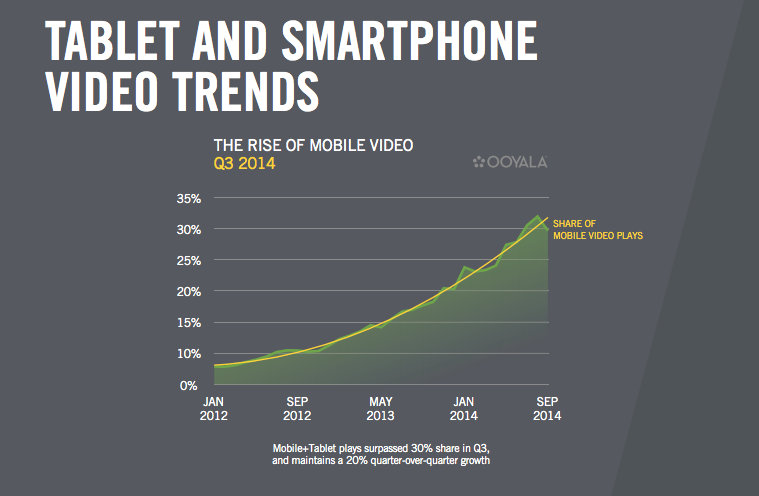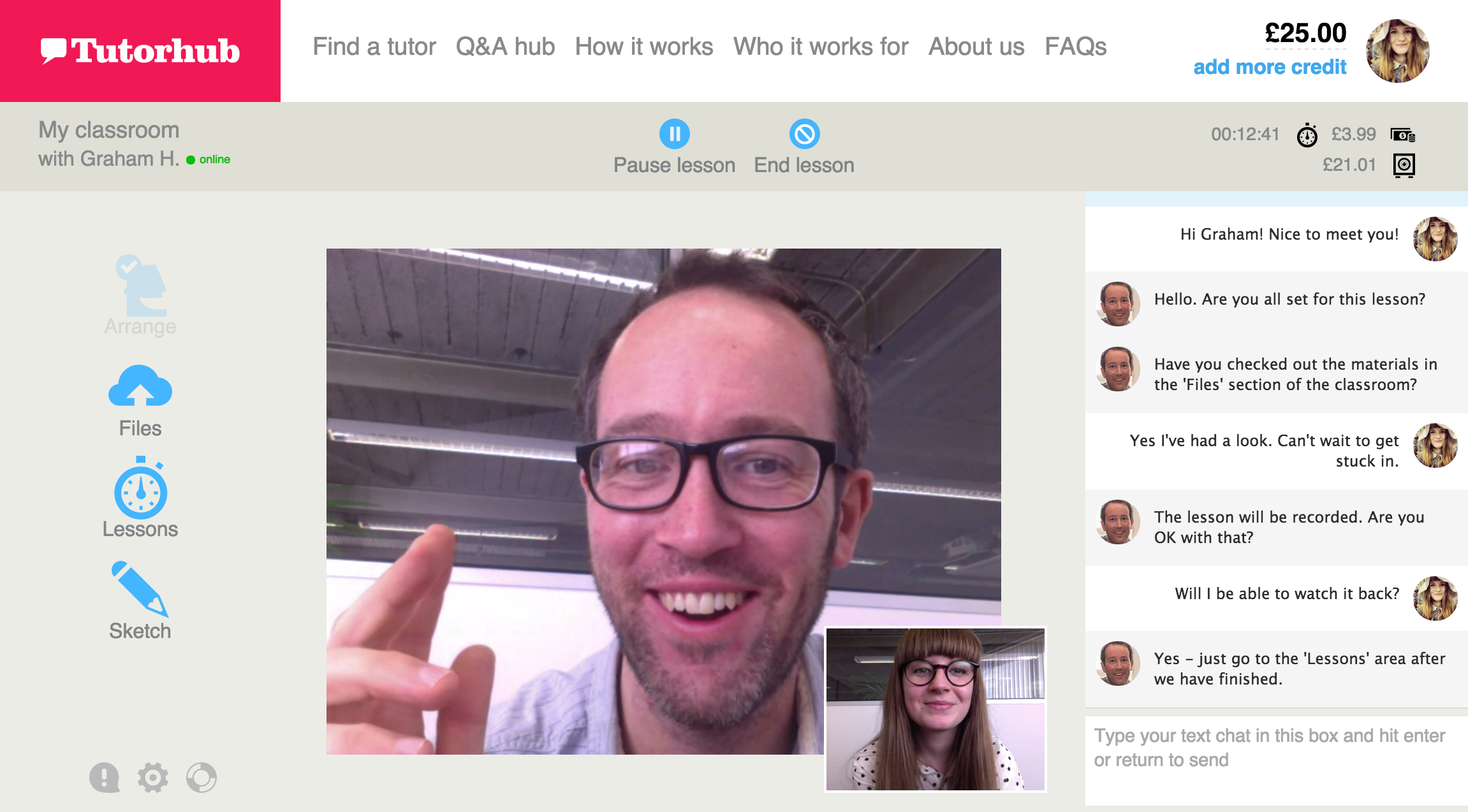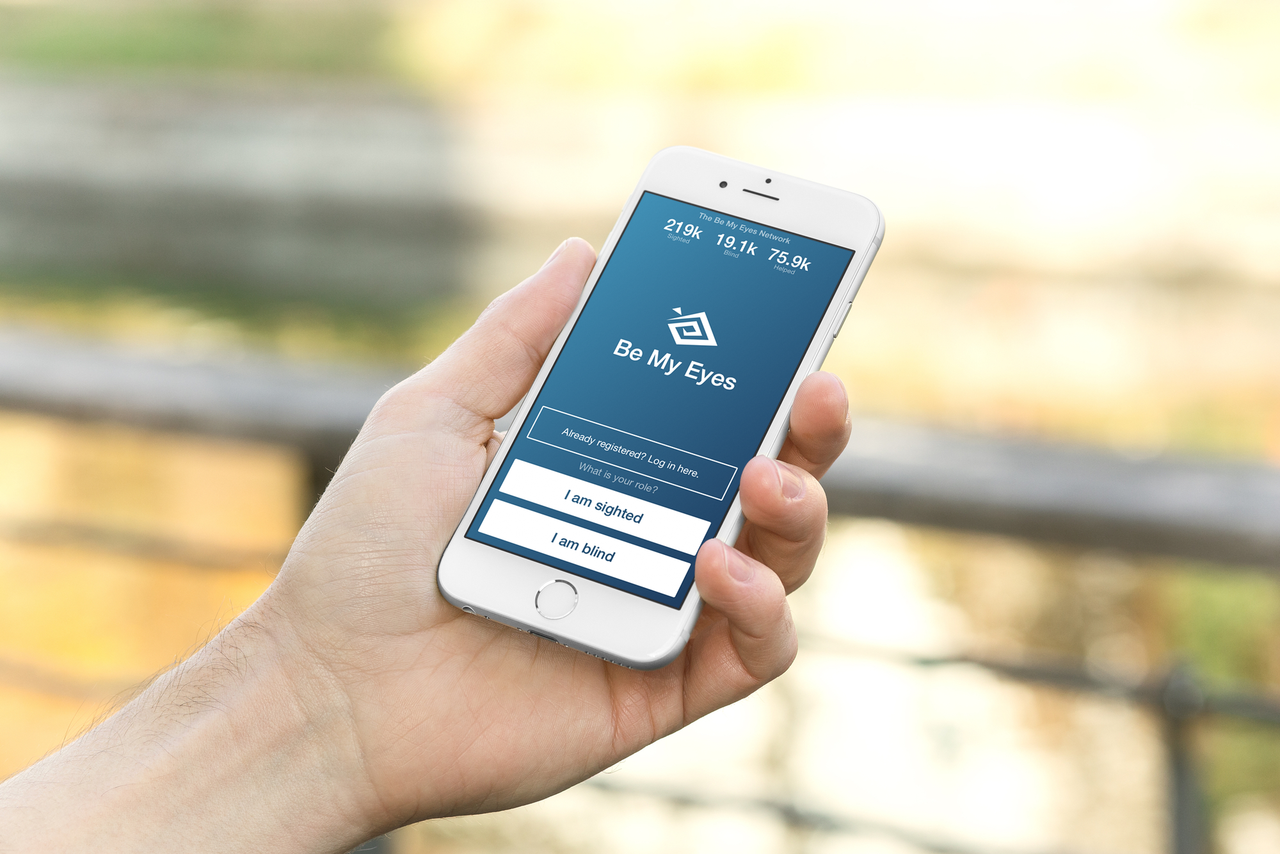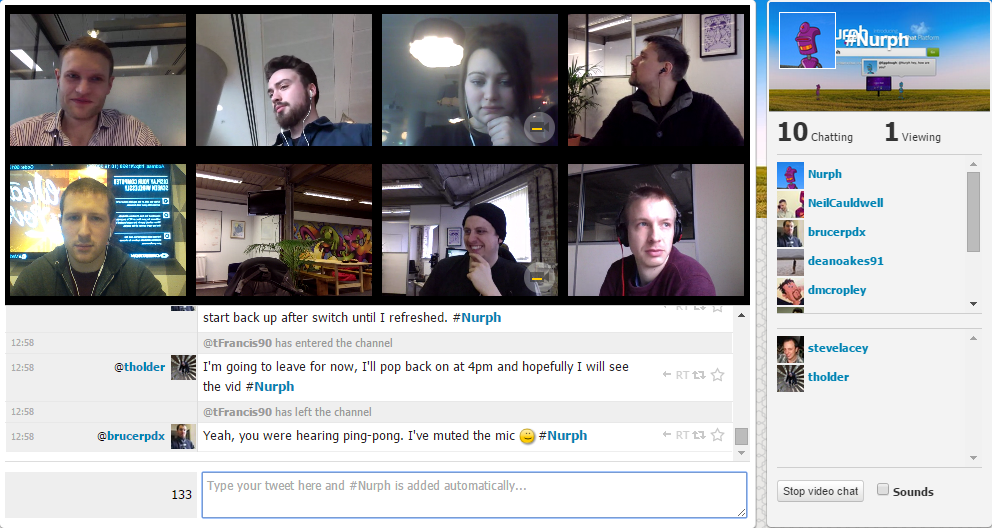As mobile data becomes increasingly more affordable, and 3G and 4G networks continue to improve, it is now easier than ever to stream and watch video online.
The proof is in the pudding, with video content proving increasingly popular online. Take Facebook for example. Since June 2014, Facebook has averaged more than 1 billion video views every day. On average, more than 50% of people who come back to Facebook every day in the US watch at least one video daily.
According to Ooyala [PDF], as of September 2014, tablets and smartphone views make up over 30% of all video plays. Cisco predicted that “consumer internet video traffic will be 80% of all consumer Internet traffic in 2019.”
There’s no doubt that the way we’re consuming video is changing. Now, a new wave of apps is revolutionising the way we view and broadcast video online, potentially changing the way we use the internet forever.
In this post, we’re going to look at several apps that are using video to change the way we use the internet, and what to expect in the future.
But first, let’s take a quick look at the technology bringing live video streaming to the masses…
What is WebRTC?
“WebRTC is a free, open project that provides browsers and mobile applications with Real-Time Communications (RTC) capabilities via simple APIs. The WebRTC components have been optimized to best serve this purpose.” – webrtc.org
Web RTC only requires a browser which supports webRTC and a laptop / phone / tablet / computer with webcam and microphone. It requires no plugins or applications to be downloaded, so it works right out of the box. It’s relatively simple to develop for and lightweight to use. You can get peer-to-peer video chat working within hours, not days.
The only limitation is your internet connection and making sure you have a compatible modern desktop browser.
Simpleweb has recently partnered with WebRTC provider, Tokbox and has been busy integrating WebRTC video into a number of applications.
What’s really interesting is the variety of ways entrepreneurs are using video to change the way we use the internet. Here’s a few examples…
Online tutoring
Tutorhub is a platform connecting tutors with students for one-to-one online tutoring.
Tutorhub was originally offering tutoring via audio chat supported by Twilio. With the rise of WebRTC, Tutorhub saw an opportunity to more realistically replicate the classroom atmosphere using one-to-one video chat.
To improve on real-life classrooms, Tutorhub integrated video archiving so that all lessons are recorded and archived for students and tutors to watch back later.
Tutorhub is a brilliant example of how live video streaming is changing the way we interact on the internet by replicating real life situations and improving on them to boost both effectiveness and efficiency.
Helping others
Be My Eyes connects blind people with sighted volunteers via live video chat. Blind users request assistance in the app and a volunteer receives a notification for help. Once the volunteers accepts, a live video connection is established and the volunteer can provide assistance.
Whether it’s helping people read expiry dates on food or navigate their way around unfamiliar environments, Be My Eyes is an incredible example of how WebRTC can help us change lives.
Broadcasting live events
Launched in early 2015, Periscope offers live video streaming via mobile apps. Periscope has been making waves in the news, and while only time will tell if it remains popular, its performance so far indicates that the world is ready and willing to welcome live video streaming.
Periscope, which was bought by Twitter for an alleged $100 million, was reported to have over a million signups worldwide in the first 10 days after it’s initial launch.
Thanks to Periscope, live video streaming is becoming the mainstream.
Periscope has already shown amazing potential in news broadcasting. For example, when an explosion happened in New York, Twitter users were broadcasting the event live from the scene, way before news crews arrived. Built-in live text chat allowed broadcasters to answer questions from anxious Twitter users.
Group video chat on Twitter
Nurph is a platform for helping people from around the world communicate around specific topics via Twitter chats (discussions between groups of people on Twitter around a hashtag).
Twitter chats are nothing new but they’re not exactly mainstream either. According to VentureBeat, there’s only around 7,000 Twitter chats each week, which may sound impressive, but when you consider Twitter’s 300million+ active users, it’s clear that Twitter chats are still pretty niche.
When we met them, Nurph had created an impressive Twitter chat platform that was popular with their users but they wanted to provide an even better platform to Twitter chatters. This is when they decided to integrate video.
By integrating WebRTC video into their Twitter chat platform, Nurph is now able to host text-based Twitter chats with thousands of participants while simultaneously allowing up to 8 people to chat via video.
Since adding group video chat to their platform, Nurph have seen recognition from VentureBeat and Guy Kawasaki and have continued to gain traction with new users joining and being converted into fans every day.
A stepping stone to virtual reality?
It’s clear that live video streaming has the capacity to forever change the way we use the internet and interact with others, but where will it lead?
Just look at Microsoft’s HoloLens project. HoloLens is “the first fully untethered, see through computer” that inserts ‘holograms’ into everyday life. Somewhere between virtual reality, augmented reality and live video, the HoloLens overlays 3D images onto the real world to allow applications to integrate seamlessly with our everyday lives. Check out the video below…
While virtual reality may not be far off, it may well be a while until it’s an affordable reality for the general public (although not if Samsung or Google have their way). Until then, live video streaming will allow us to communicate remotely in a more human way than ever before. While the HoloLens offers a virtual plumber who can instruct you on repairs, the same thing is already achievable with live two way video streaming and the applications and startups are rolling out.
Soon we will not have to visit a doctor to receive a human, one-on-one medical diagnosis. We will not have to send our children to school or university to receive education. We won’t even have to go to parties or to the pub to socialise with our friends.
Until virtual reality is readily available to the bulk of consumers, live video streaming technology is available now, and with Web RTC becoming a standard it’s more affordable and accessible than ever.
If you want to know how you can integrate live video streaming into your app, get in touch with Simpleweb for an informal chat today.








